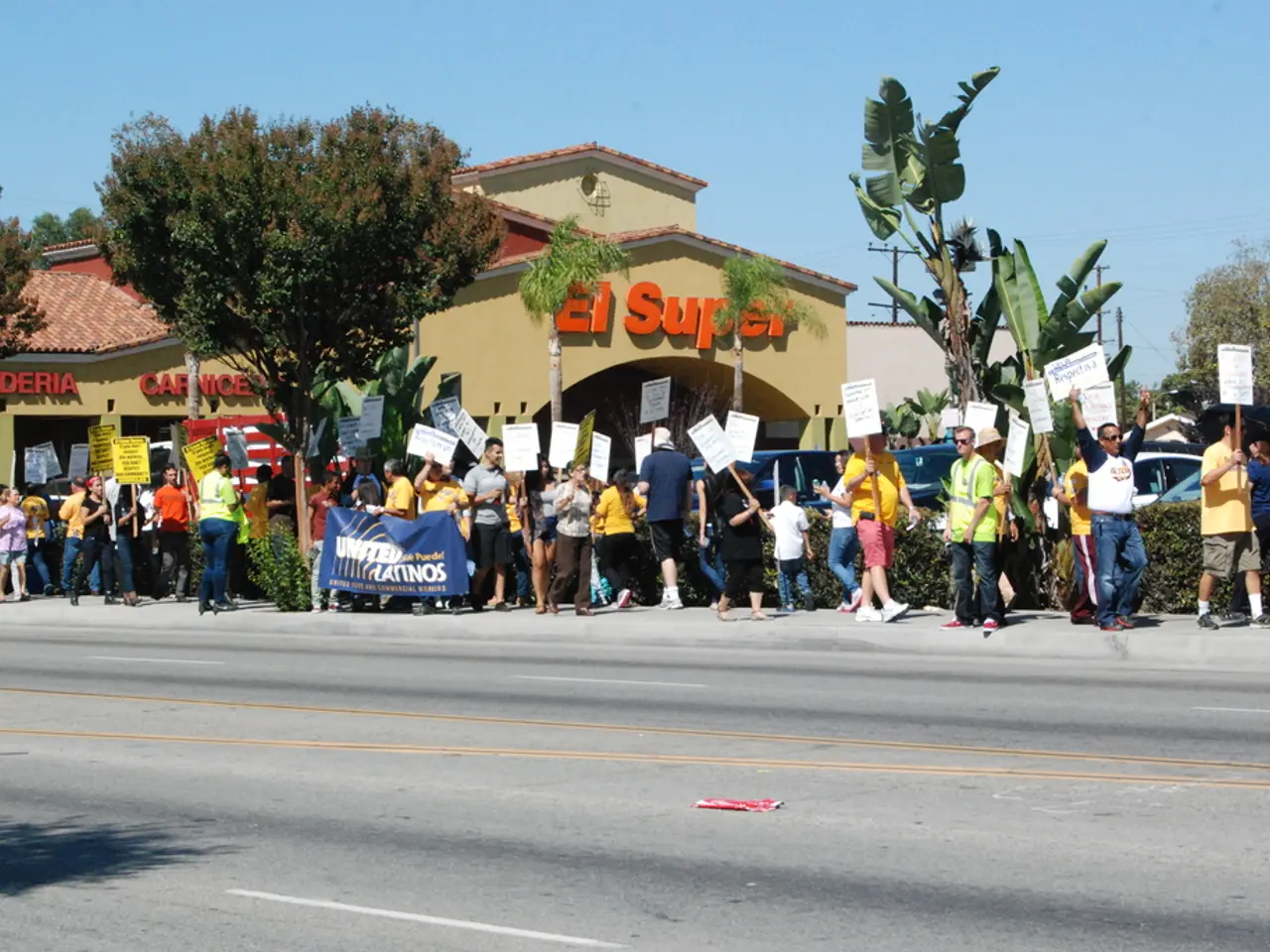Forming a New Alliance
Building a Strong Community Coalition: Key Strategies and Resources
Community coalitions are a powerful tool for addressing shared concerns and achieving common goals. Here are some key strategies for effectively recruiting members for a successful community coalition.
Recruit Diverse Stakeholders
To make a coalition more effective and reach a wider audience, it's essential to involve individuals and groups from various sectors and backgrounds. This diversity brings a multitude of perspectives and resources, increasing the coalition's legitimacy and reach [1].
Emphasize Potential Benefits
One of the most effective ways to recruit members is by highlighting the benefits of collaboration. These benefits may include collective impact, addressing shared community needs, access to resources, and opportunities for collaboration that individual members might not achieve alone [1][3]. By explicitly addressing members' interests and how the coalition can help meet them, recruitment effectiveness increases.
Map and Leverage Community Resources
Resource mapping helps identify who can contribute what, facilitating better use of community assets and creating a stronger value proposition for members [2]. By understanding the resources available within the community, the coalition can tailor its message and activities to best meet the needs of potential members.
Address Potential Barriers
Certain factors, such as long working hours, lack of representation in rural areas, and transportation limitations, can hinder coalition membership [3]. By proactively addressing these barriers, the coalition can foster collaboration, simplify processes, and coordinate supports across networks, enhancing participation [2].
Innovative Engagement Approaches
To reach diverse or underrepresented groups, consider using innovative, transparent engagement approaches like co-hosted webinars, social media events, or interactive forums [4]. These methods can help build trust and provide tailored recruitment messaging.
Clear Roles and Expectations
Potential members want to know how their contribution fits into the coalition's goals and what commitments are required. Providing clear roles and expectations helps overcome hesitation and promotes sustained involvement [1][4].
Leverage Success Stories
Demonstrating the tangible impact of past coalitions can motivate new members to join. Use testimonials or case studies of coalition success to show the benefits of collaboration [5].
Resources Needed
A successful coalition requires skilled facilitation, communication platforms, resource mapping, and funding or in-kind resources to support activities [6].
Potential Barriers
Difficulty navigating complex service systems or organizational silos, transportation and access challenges, limited funding, lack of awareness or understanding of coalition benefits, and cultural or language differences can inhibit engagement [2][4]. By addressing these barriers, the coalition can significantly enhance member recruitment.
Specific Benefits
The coalition's efforts will outline specific benefits to potential member's organizations, ensuring they understand how their involvement will further their interests [7]. The activities of the coalition will be related to the interests and activities of potential member's organizations.
In conclusion, effective member recruitment for community coalitions requires good communication skills, a clear understanding of the benefits, a proactive approach to addressing potential barriers, and a commitment to leveraging diverse resources. By implementing these strategies, a coalition can build a strong and diverse membership, ultimately leading to more successful community change initiatives.
[1] Kretzmann, J. P., & McKnight, J. L. (1993). Building Communities from the Inside Out: A Path Toward Finding and Mobilizing a Community's Assets. Jossey-Bass.
[2] Kania, J., & Kramer, M. (2011). Collective Impact. Stanford Social Innovation Review.
[3] Kawasaki, G. (2014). Enchantment: The Art of Changing Hearts, Minds, and Actions. Portfolio.
[4] Koh, P. (2017). The Power of Collaborative Leadership: 5 Leadership Principles for the Innovation Age. Berrett-Koehler Publishers.
[5] W. K. Kellogg Foundation. (2014). Community Truth & Reconciliation Commission Final Report.
[6] Bridgespan Group. (2014). The Art of Leadership in Community Change.
[7] National Coalition for Dialogue & Deliberation. (2014). The Essential Guide to Public Engagement.
- To facilitate effective community and rural development through the coalition, it's crucial to prioritize education-and-self-development and personal-growth opportunities for members, as these can strengthen individual capacities and contribute to the coalition's overall success.
- In order to create a sustainable community coalition with lasting impact, it's essential to focus on learning from the coalition's past achievements and using success stories as a means to recruit new members, inspiring them with the potential benefits of rural development and community development efforts.




